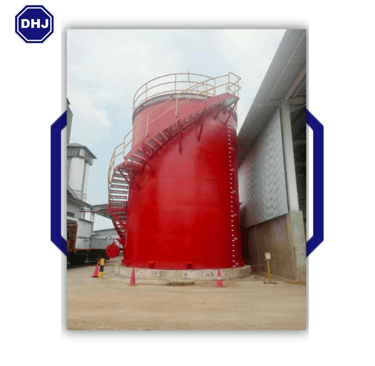Preventive Maintenance Tips for Industrial Water Tanks
Industrial Water Tank


Industrial water tanks are critical assets that support smooth operational processes in manufacturing, energy, and other industrial sectors. Neglecting regular maintenance can lead to serious issues such as leakage, water contamination, or structural damage, all of which can disrupt production and cause significant financial losses. Implementing a preventive maintenance program is essential to minimize operational risks and extend the lifespan of your water storage systems.
Conduct Regular Inspections
Schedule periodic visual inspections to identify potential issues early. Check the condition of tank walls, pipe connections, valves, and water-level indicators. Look for signs of cracks, corrosion, leaks, or wear and tear. Early detection helps prevent minor problems from escalating into costly failures.
Perform Routine Cleaning
Sediment buildup, algae growth, and bacterial contamination can deteriorate water quality and damage the tank’s interior. Clean the tank regularly according to the manufacturer’s recommendations and the type of fluid being stored. Proper cleaning ensures both water hygiene and structural integrity.
Maintain Pipe Connections and Fittings
Ensure all pipe joints and fittings are properly sealed and show no signs of leakage. Check gaskets and seals frequently, replacing them when needed to prevent water loss and damage to surrounding infrastructure.
Read also: The Role of Fiber Optic Poles in 5G Connectivity Transformation
Calibrate Monitoring Instruments
Verify that sensors such as level indicators, pressure gauges, and flow meters are functioning accurately. Routine calibration ensures reliable monitoring and prevents operational errors caused by faulty readings.
Protect External Surfaces
Shield the tank from environmental stressors like extreme temperatures, UV exposure, or physical impact. Consider applying protective coatings or weather-resistant covers to prolong the tank’s durability and reduce corrosion risk.
Keep Detailed Maintenance Records
Document every maintenance activity — including inspection dates, repairs, and component replacements. A comprehensive maintenance log helps track the tank’s condition and supports better long-term planning and budgeting.
Train Operational Staff
Ensure that personnel responsible for operating and maintaining water tanks have adequate technical knowledge and safety training. Skilled staff can detect issues earlier and perform maintenance procedures correctly, reducing downtime and repair costs.
Conclusion
By consistently applying these preventive maintenance steps, your company can reduce operational risks, ensure reliable water supply, and maximize asset performance over the long term. Preventive care is not just about maintenance — it’s an investment in the reliability and efficiency of your industrial infrastructure.
Source:
Aquatech Indonesia – “Pentingnya Pemeliharaan Tangki Air Industri Secara Berkala”
